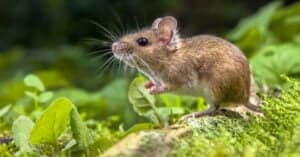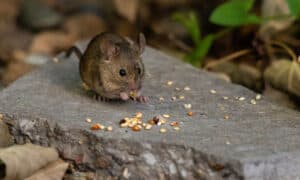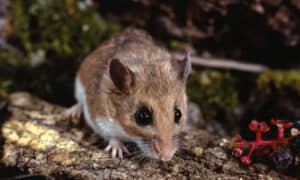
The guinea pig is a rodent that originated in South America.
©iStock.com/Galyna0404
Guinea pigs are rodents originally from countries in South America. They were introduced to Europe in the 16th century and have been popular pets ever since. But did you know that guinea pigs try to hide their pain? Or that they can learn to do tricks? These cute and furry animals are sensitive, intelligent, and have lots of fascinating characteristics. Here are 10 incredible guinea pig facts about one of the most social little animals on Earth.
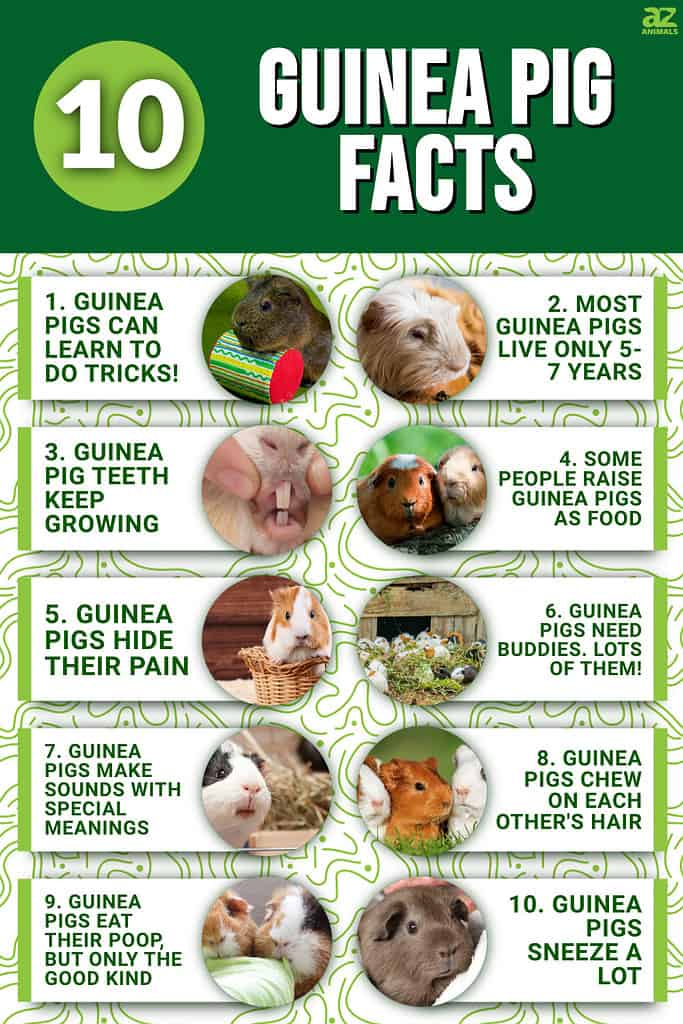
10. Guinea pigs sneeze a lot
It’s pretty common to hear guinea pigs sneeze. This fact is because they sneeze multiple times a day! Their tendency to sneeze is because guinea pigs have very sensitive noses and are constantly sniffing around. Plus, all the burrowing they do helps dust and other particles slip up their tiny noses.
Sneezing helps to clean out their nostrils. So if you see your guinea pig sneezing a lot, it’s natural for them to do so.
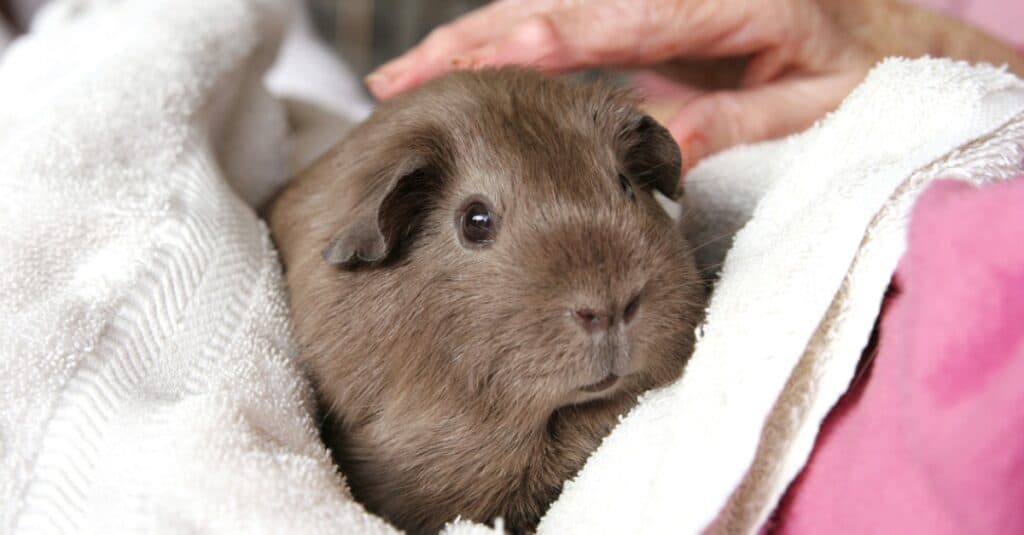
Guinea pigs have sensitive noses and sneeze multiple times a day.
©iStock.com/suemack
However, guinea pigs are very susceptible to respiratory infections. Therefore, it’s important to keep an eye on their sneezing in case it’s an indication of illness. If your guinea pig is sneezing too much, or if they seem to be having trouble breathing, consult with a vet right away.
Also, give your guinea pig fresh hay and clean water consistently to keep the dust levels in their environment as low as possible.
9. Guinea pigs eat their poop, but only the good kind
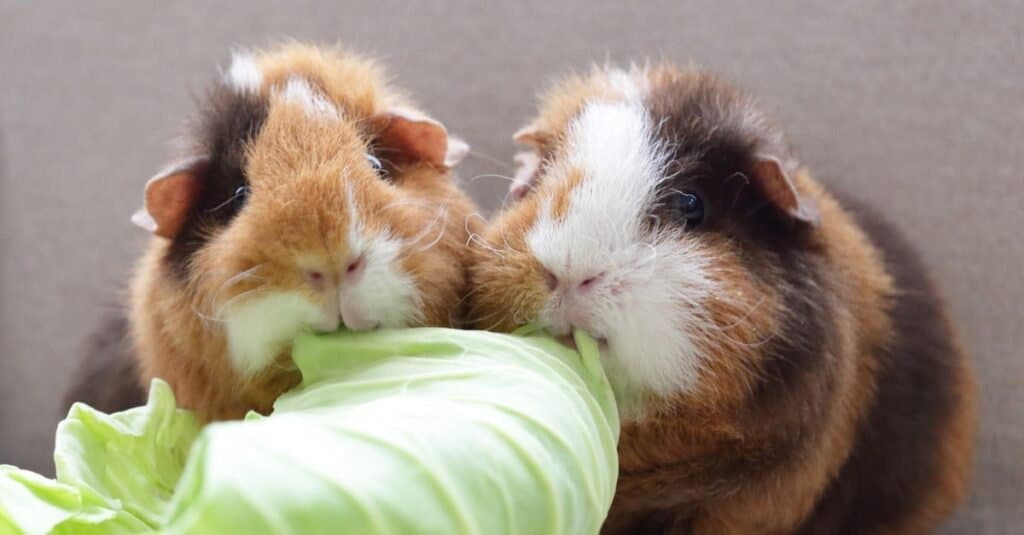
Eating quality hay, vegetables, and a certain type of their poo helps keep guinea pigs healthy.
©yurilily/Shutterstock.com
Don’t be alarmed if a guinea pig sometimes eats its feces. This behavior is because a guinea pig must snack on its poop to supplement its diet. Yes, really!
So if you see your guinea pig snacking on their poop, don’t worry; they’re just getting their daily dose of vitamins! This practice may seem gross to us, but it’s a perfectly normal part of a guinea pig’s digestive process.
8. Guinea pigs chew on each other’s hair
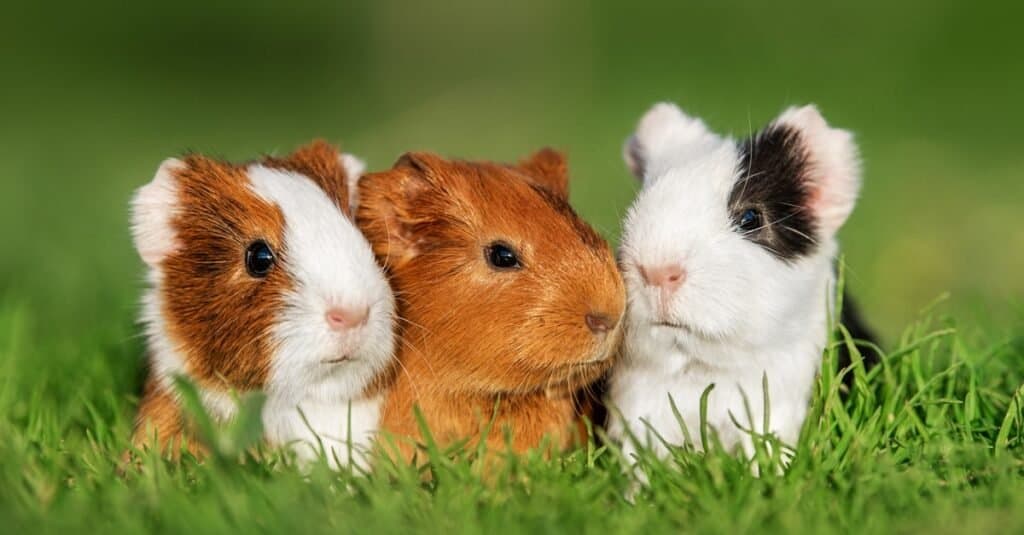
One way guinea pigs show dominance is by chewing each other’s hair.
©Rita_Kochmarjova/Shutterstock.com
If you see a guinea pig gnawing on another guinea pig’s hair, it’s not to tickle or groom. Instead, this behavior is one way that guinea pigs show dominance over each other. They also love to chase each other around and play fight. These behaviors are ways for guinea pigs to assert their power over the others in their group.
The most dominant guinea pigs will usually be the ones who get the best food and the best sleeping spots. So it’s crucial for them to establish their dominance early on. If you have a group of guinea pigs, you’ll probably see these behaviors quite often. It’s all part of their natural social hierarchy.
7. Guinea pigs make sounds with special meanings
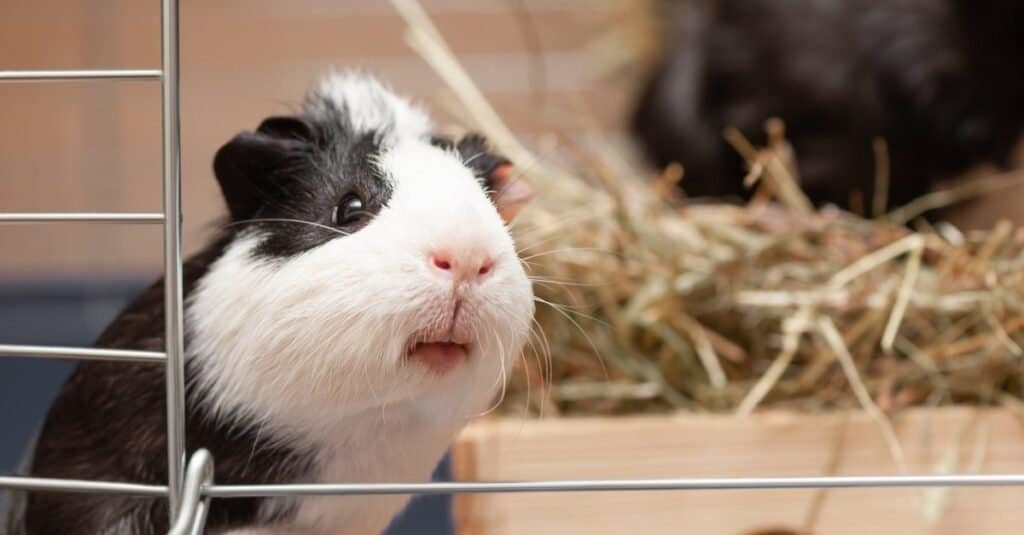
Guinea pigs make cute squeaking, chattering, and purring sounds to express themselves.
©iStock.com/DevMarya
Did you know that the guinea pig makes several specific sounds to communicate? Each vocalization they produce has a different meaning. Purring usually means guinea pigs are content. Chutting is a sound they make when they pursue something, like food. Chattering is a warning sound, telling others to back off. Squealing is a sign of displeasure or pain. Chirping is a sign of stress. And a rumble means they are angry or showing dominance.
Rumblestrutting is the name for a guinea pig’s behavior where they strut around and make a rumbling noise. This practice is yet another way guinea pigs show dominance, especially to other guinea pigs.
Guinea pigs are very social creatures and use these vocalizations to understand each other.
6. Guinea pigs need buddies. Lots of them!
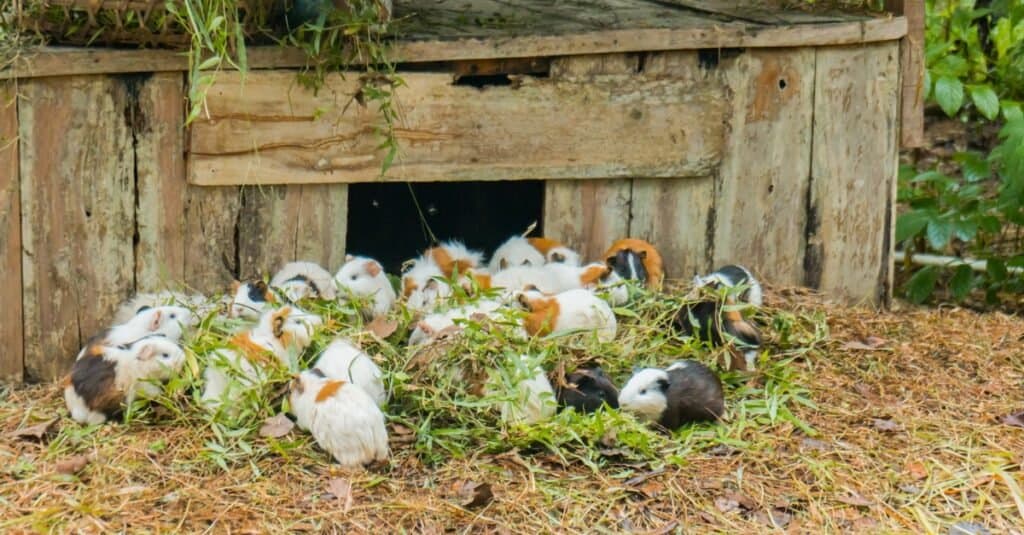
The guinea pig is a very social animal. It needs companions to be happy and healthy.
©yasuspade/Shutterstock.com
In the wild, guinea pigs live in groups called “herds.” A herd usually has up to ten members.
Guinea pigs need the companionship of other guinea pigs to be happy and healthy. They can groom, play together, and cuddle when they’re with other guinea pigs. All of these activities help reduce stress and keep them healthy. Plus, having some buddies to share life with keeps guinea pig boredom at bay.
So, if you’re considering raising a guinea pig, be prepared to get at least two! However, it’s probably best to raise males with males and females with females. Female guinea pigs are called sows, and males are called boars. Mixing the two sexes in one herd leads quickly to guinea pig pregnancies.
If you intend to breed guinea pigs, it’s essential to know the age of the females as much as possible. Unfortunately, older female guinea pigs could have difficulty giving birth.
5. Guinea pigs hide their pain
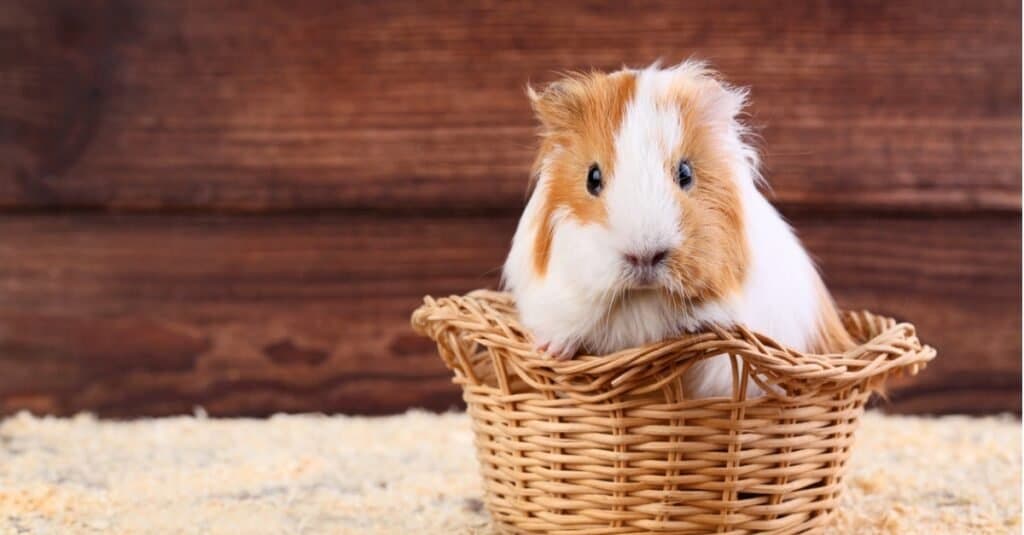
Sometimes guinea pigs hide signs of pain or illness to protect themselves from harm.
©iStock.com/5second
In their natural habitat, guinea pigs are prey animals. This status means they are constantly at risk of being eaten by predators. As a result, they have evolved to hide their pain and illness for as long as possible. Sadly, if a guinea pig shows signs of weakness, it is more likely to be targeted by predators.
However, this instinct to hide pain can make it difficult for owners to know when their guinea pig is sick or injured. As a result, it’s important to be aware of the symptoms that may indicate that a guinea pig is in pain.
Look for these signs:
-Appetite changes
-Hunched over body posture
-Weight loss
-Difficulty moving
-Lethargy
-Increased thirst
-Changes in fecal droppings
-Irritability
-Hiding away from the rest of the herd
If you notice any of these signs, take your guinea pig to the vet right away. Early detection and treatment of illness can make a big difference in your guinea pig’s health.
4. Some people raise guinea pigs as food
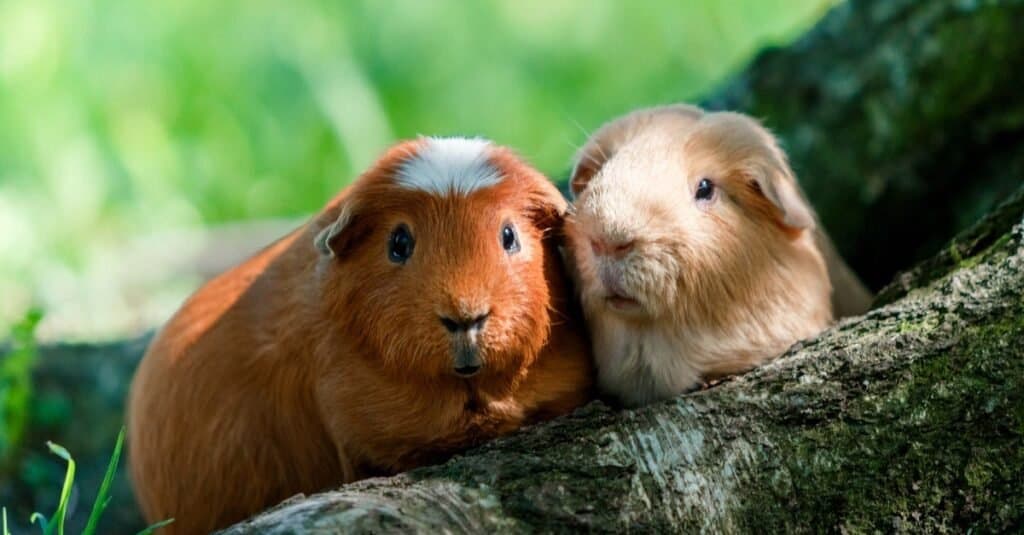
In some parts of the world, guinea pigs are raised as food.
©iStock.com/sobakabarobaka
Guinea pigs were introduced to North America in the late 19th century and quickly became popular as household pets. However, they were initially (and still are) raised for food in some parts of the world, including Peru and Bolivia.
Why eat a guinea pig? Because they are a source of lean protein and are low in fat and cholesterol. They are also a good source of vitamins and minerals, including vitamin C, niacin, and phosphorus.
In nature, guinea pigs inhabit a large area of South America, including the Andes Mountains. In this part of the world, people raised guinea pigs for meat as early as 5000 BC.
3. Guinea pig teeth keep growing
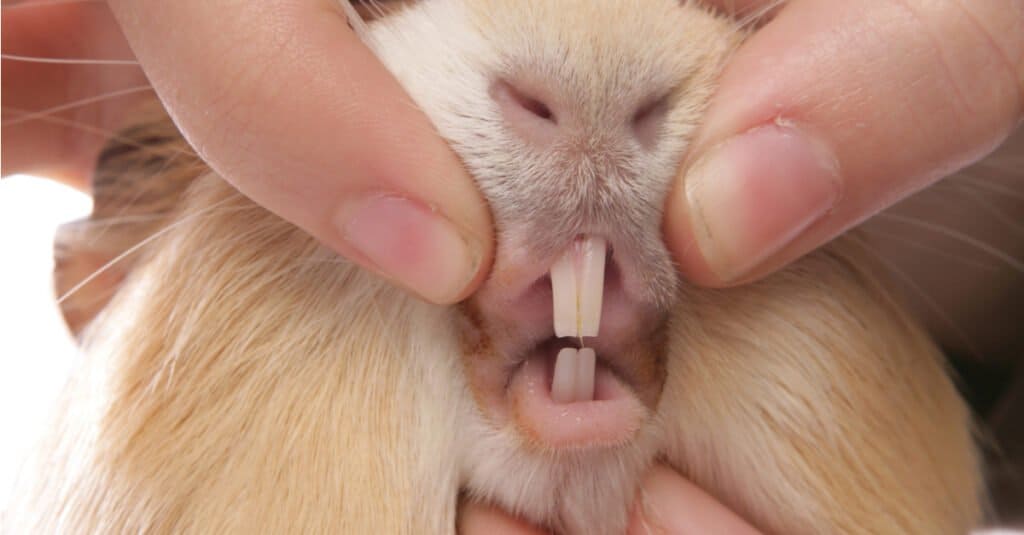
Check a guinea pig’s teeth often for overgrowth.
©chrisbrignell/Shutterstock.com
When you raise guinea pigs, it’s important to check the state of their teeth regularly. That’s because if their back teeth grow too long, it can cause a number of problems.
Their overgrown back set of teeth can become misaligned or block their throat, which makes it difficult for them to eat properly. This difficulty eating can lead to weight loss and malnutrition. Additionally, overgrown teeth can cause infection and pain. If not treated, this can be fatal.
To prevent overgrown teeth, provide your guinea pig with plenty of hay and non-toxic toys for chewing. These gnawable items help keep their teeth trimmed. Of course, it would help if you also had their teeth checked and trimmed by a veterinarian every six months.
Great toys for guinea pigs include ones made of natural fibers like twigs, straw, and rattan. Make sure none of the natural fiber toys have toxic coatings or chemicals added. Also, avoid placing any plastic items where guinea pigs can chew them.
2. Most guinea pigs live only 5-7 years
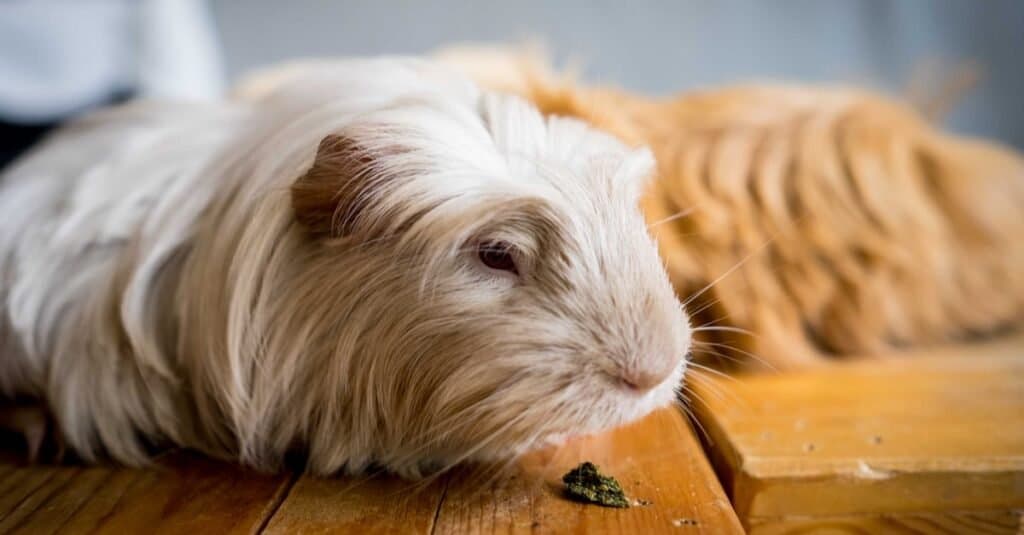
Most guinea pigs live for 5-7 years, though some live for eight years or more.
©Chertamchu/Shutterstock.com
Guinea pigs only live for a handful of years on average. However, some have to live up to 8 years or longer. A guinea pig named Snowball holds the record for the oldest guinea pig that ever lived. Snowball lived to be 14 years old!
Guinea pigs that have a good diet and live in clean, spacious cages with plenty of non-toxic toys and companions to keep them occupied tend to live longer. But, yes — they’ll still sneeze!
1. Guinea pigs can learn to do tricks!
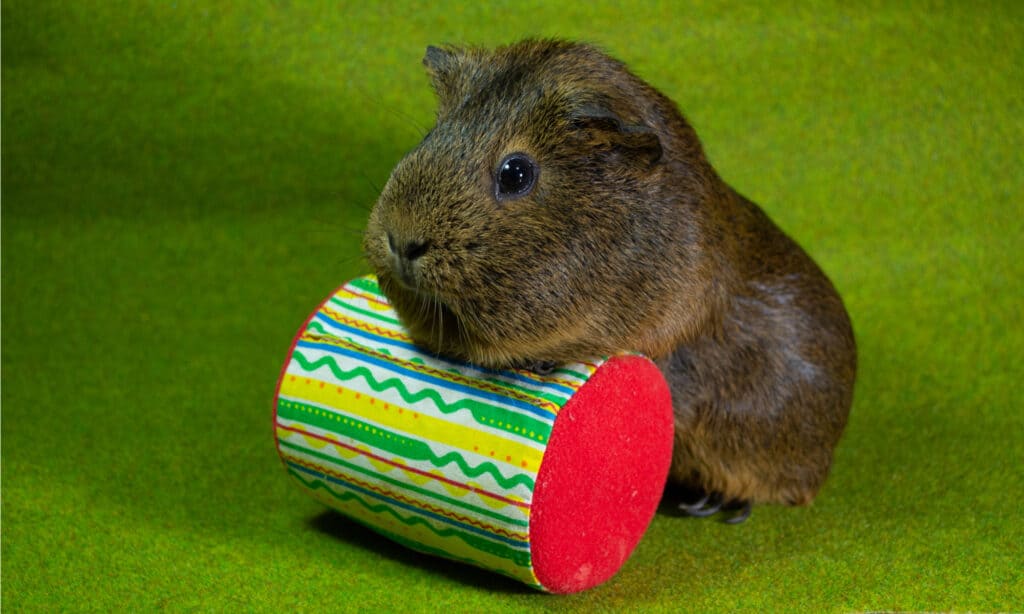
With a little patience and effort – Guinea pigs can learn to do tricks!
©AnBoris/Shutterstock.com
These cute critters are intelligent animals you can train to do all sorts of fun things. Some guinea pigs can even learn to jump through hoops! If you want to teach your guinea pig a trick, the best way to start is by offering them a reward for doing something like turning in a circle on command. With some patience and practice, your guinea pig will be performing tricks in no time!
Perhaps the simplest trick to teach a guinea pig is to learn its name and come when you call them. When training your guinea pig to remember their name, always use positive reinforcement such as treats or praise to encourage them. With enough repetition, your guinea pig will eventually associate their name with something positive and begin to respond when called. Remember to be consistent when calling your guinea pig by their name. They will soon be impressing you by understanding this and more tricks they learn, like shaking your hand with their paw.
Teaching your guinea pig to do tricks is a fun way to keep them entertained!
Why are guinea pigs called guinea pigs?
There’s some debate about where the animal name ‘guinea pig’ originated. Some historians believe guinea pigs were named after Guinea the country. Others believe the name derived from the probability that the cost of these animals in the 16th century was one guinea (a coin). Either way, the name stuck for thousands of years.
How To Raise Guinea Pigs As Pets
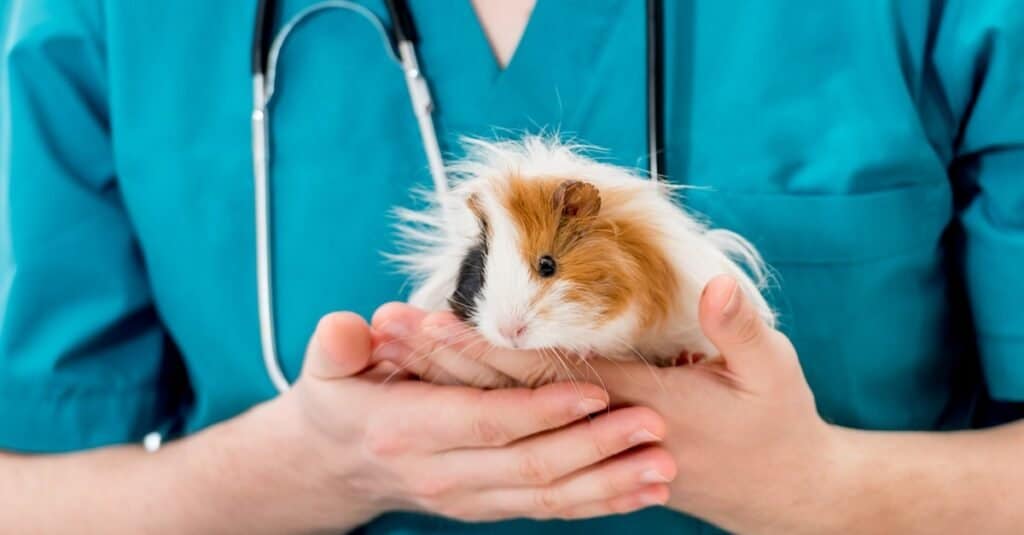
Guinea pigs live longer when great care from you and your veterinarian.
©Tatyana Vyc/Shutterstock.com
Here’s a list of basic steps to take when raising guinea pigs as pets.
- Provide them with a clean, spacious cage with plenty of ventilation.
- Raise multiple guinea pigs for companionship. Don’t mix the males and females in the same cage unless you’re knowledgeable about properly breeding these animals.
- Feed them a healthy diet of hay, fresh vegetables, and a small number of nutritious pellets.
- Make sure they have access to clean water in their water bottles at all times.
- Provide them with plenty of non-toxic toys and enrichment items to keep them stimulated.
- Regularly check their back teeth for overgrowth.
- Watch for symptoms of some pain or illness that they might be hiding.
- Take guinea pigs to the vet for regular checkups and vaccinations.
Following these simple guidelines for guinea pig care can provide your pets with a happy and healthy life.

Everyone needs a cute little buddy to sit on their desk while they work!
©Skylines/Shutterstock.com
Guinea pigs are incredible animals!
The guinea pig is an incredible creature. Their popularity as pets has grown tremendously in recent years, and it’s easy to see why. They are intelligent, social creatures that bond well with their owners. They are also relatively low-maintenance, which makes them excellent pets for busy people.
The photo featured at the top of this post is © Daniel Requena Lambert/Shutterstock.com
Thank you for reading! Have some feedback for us? Contact the AZ Animals editorial team.




